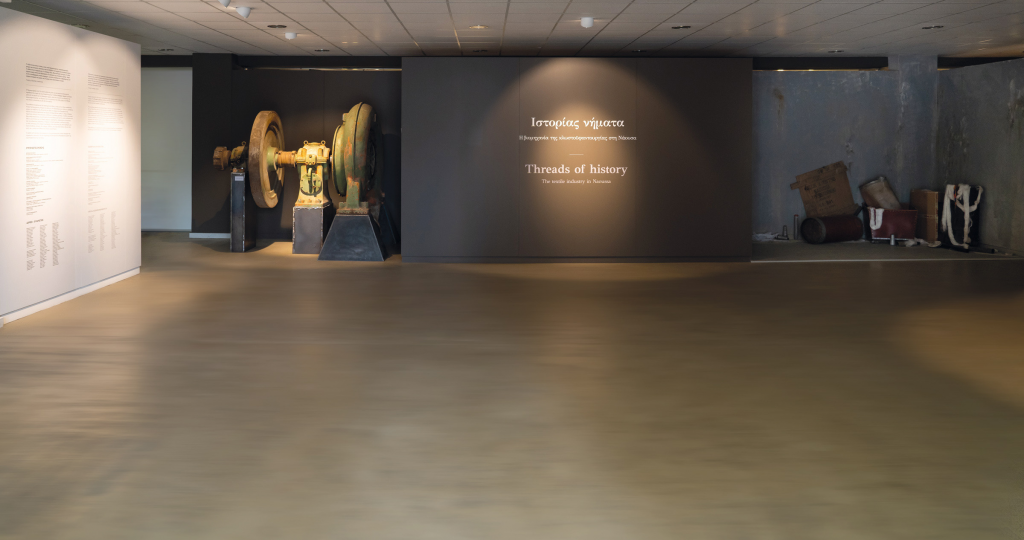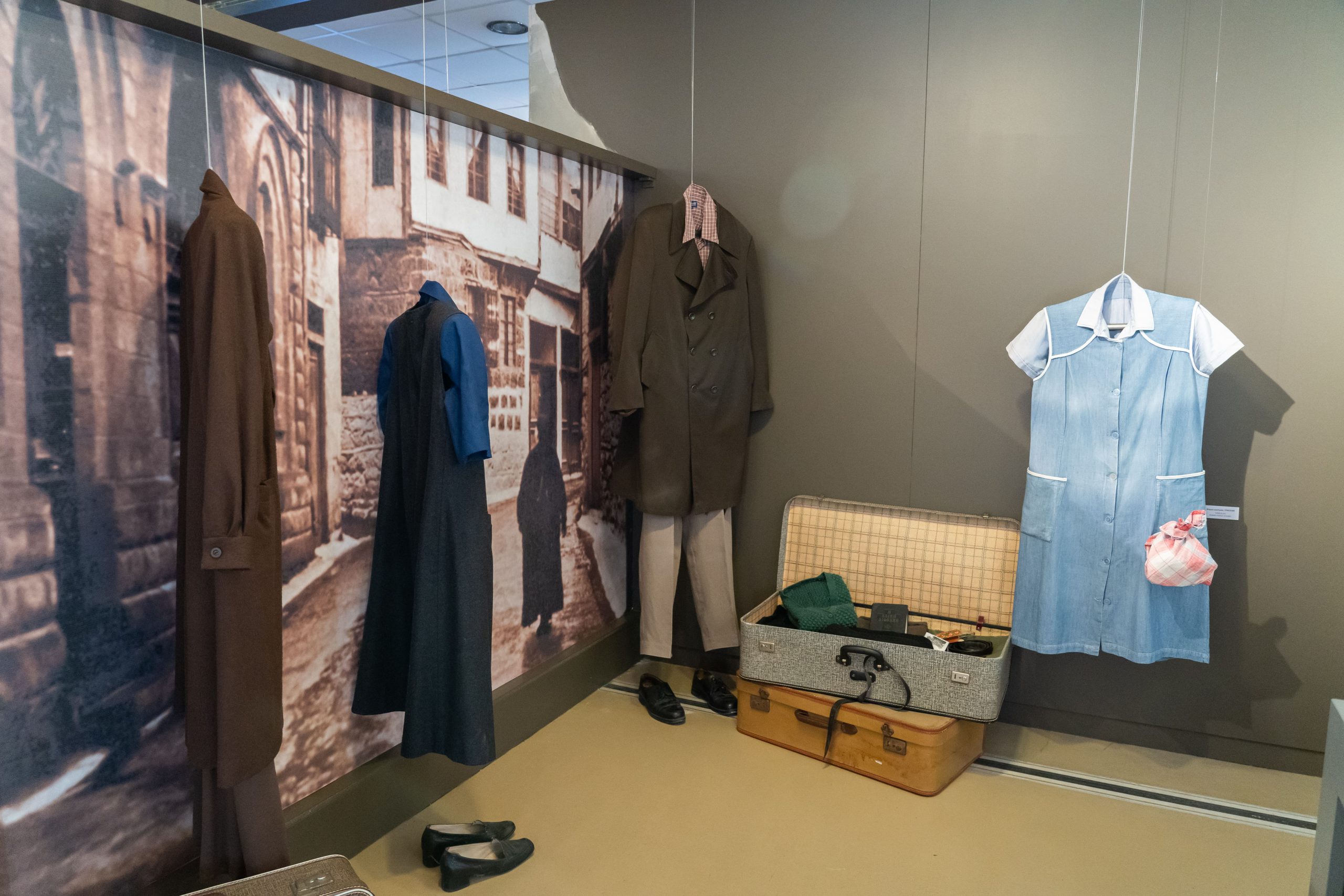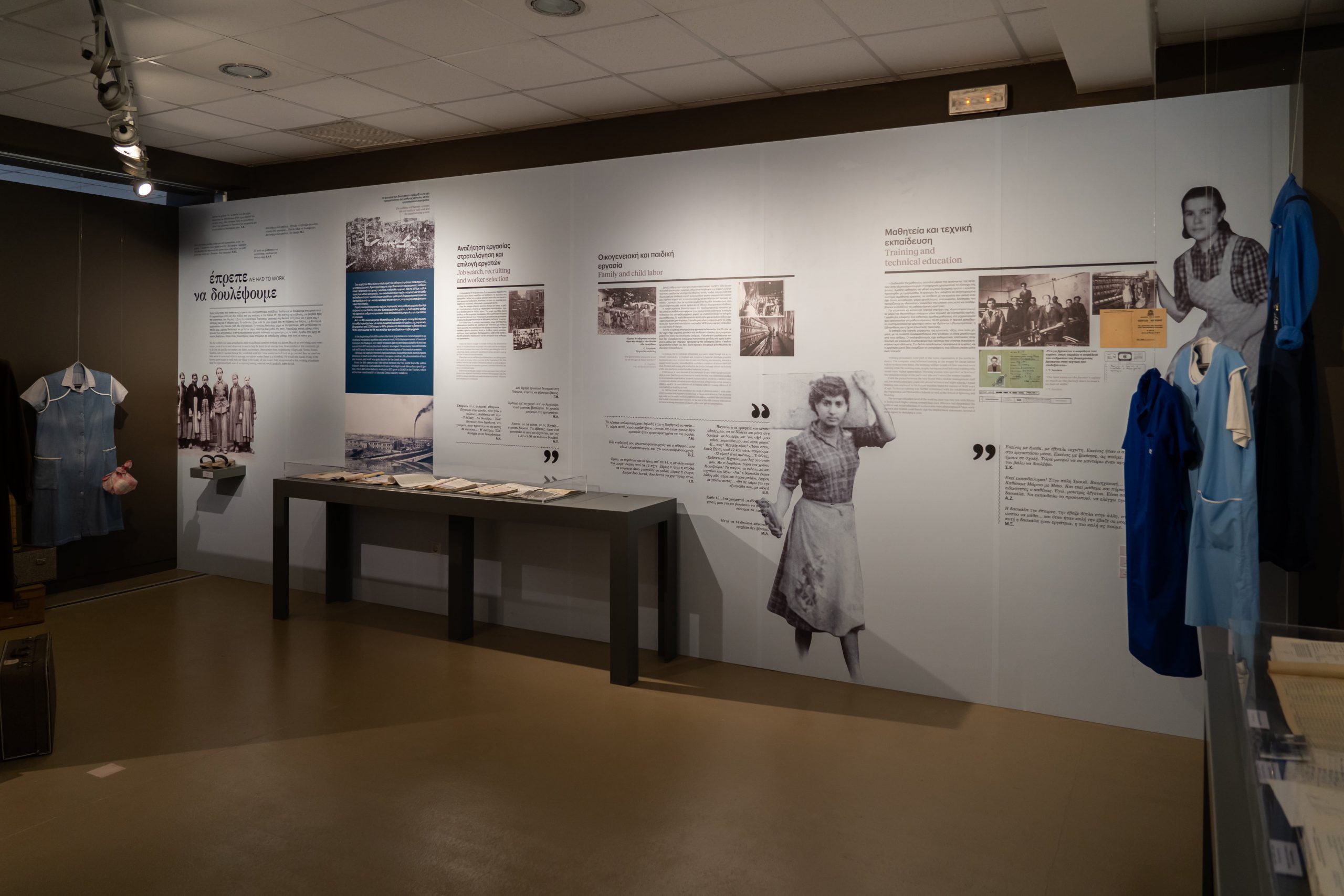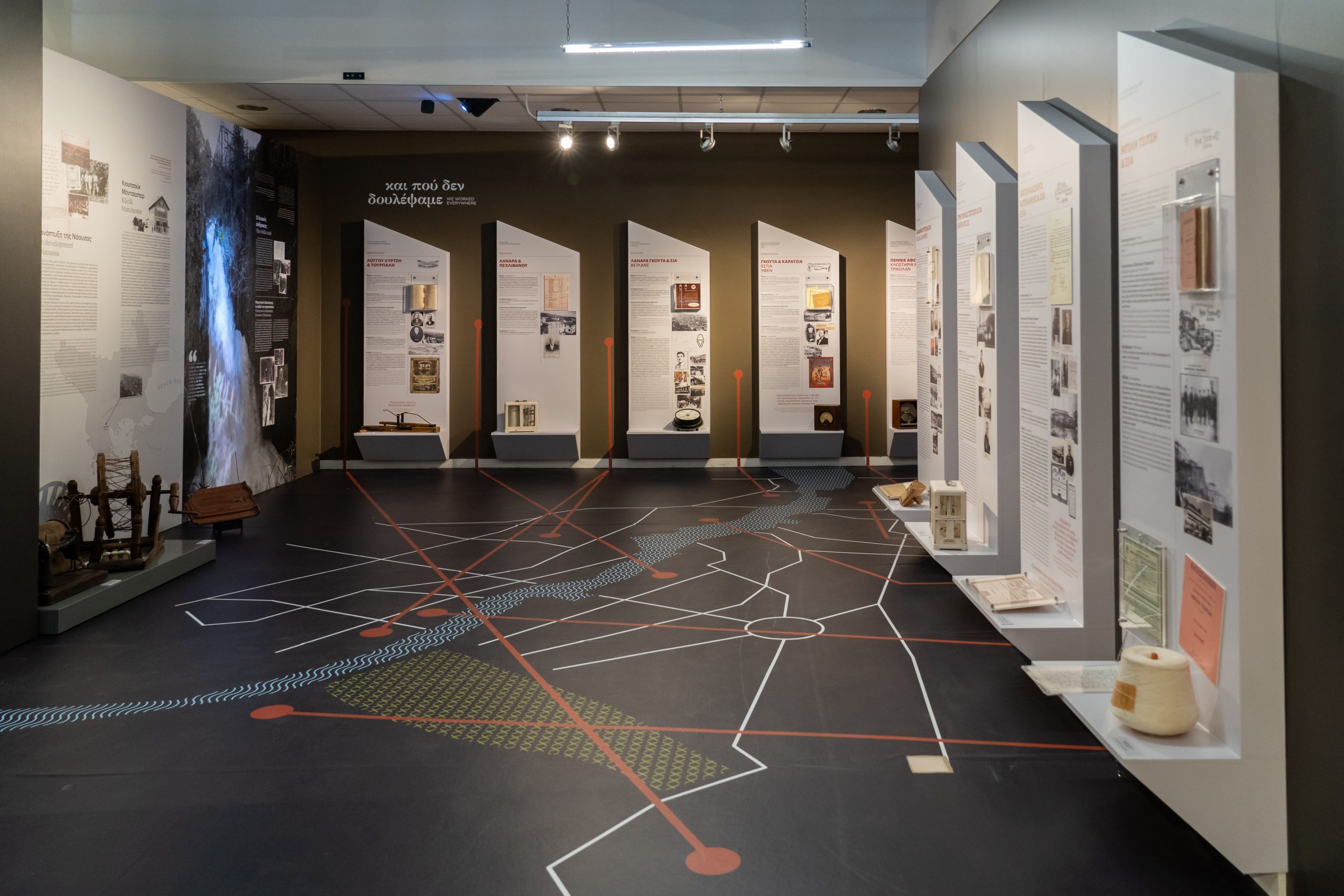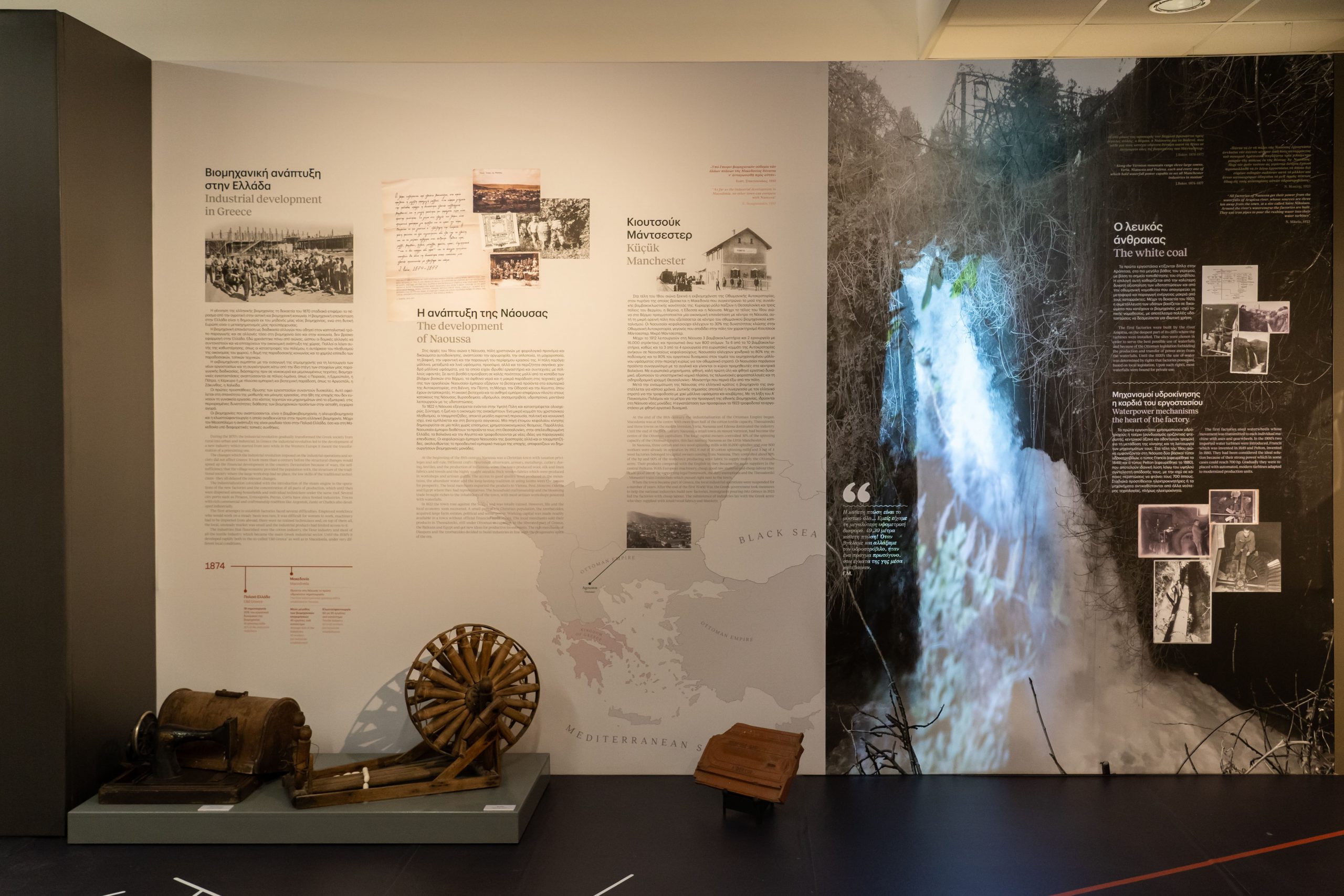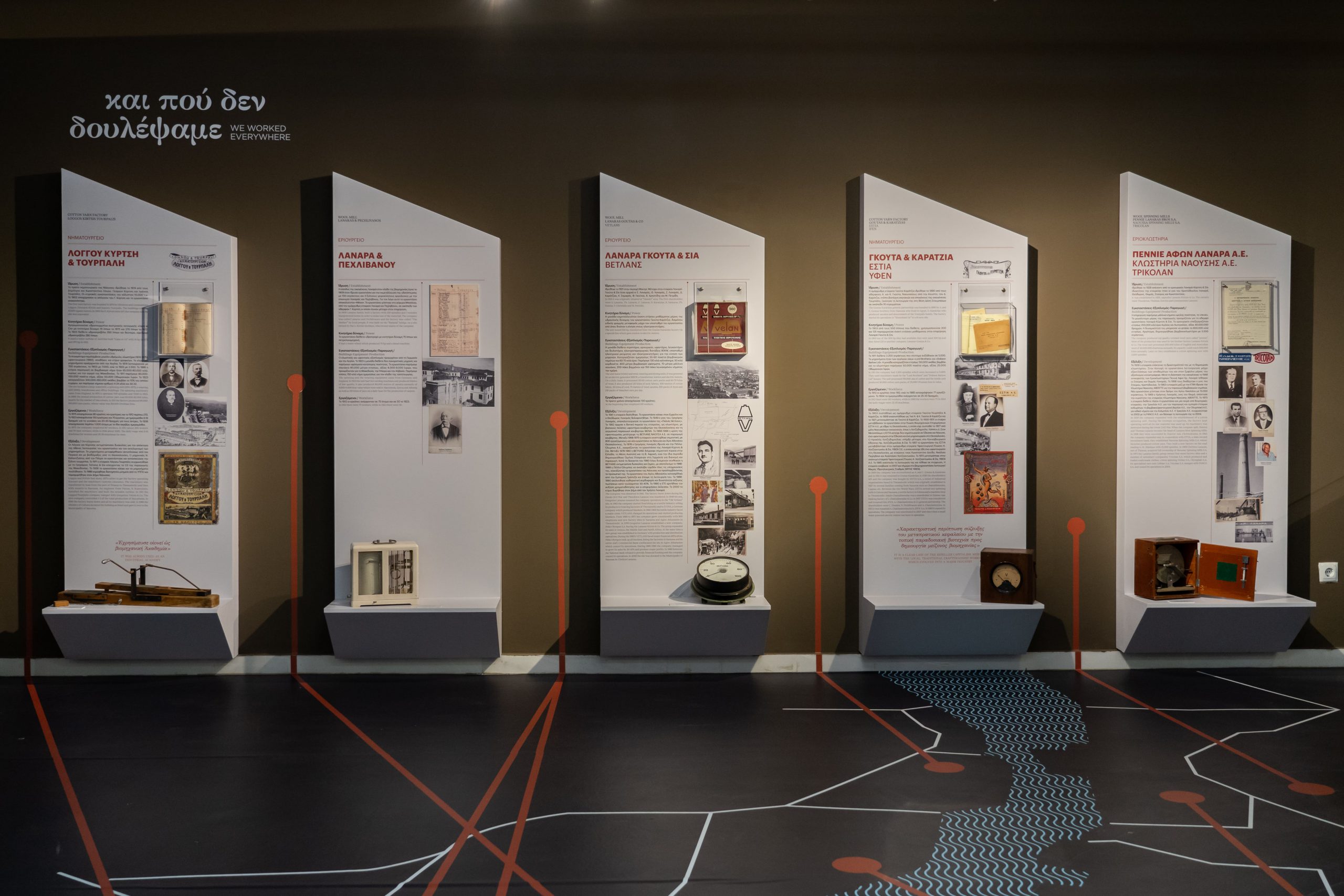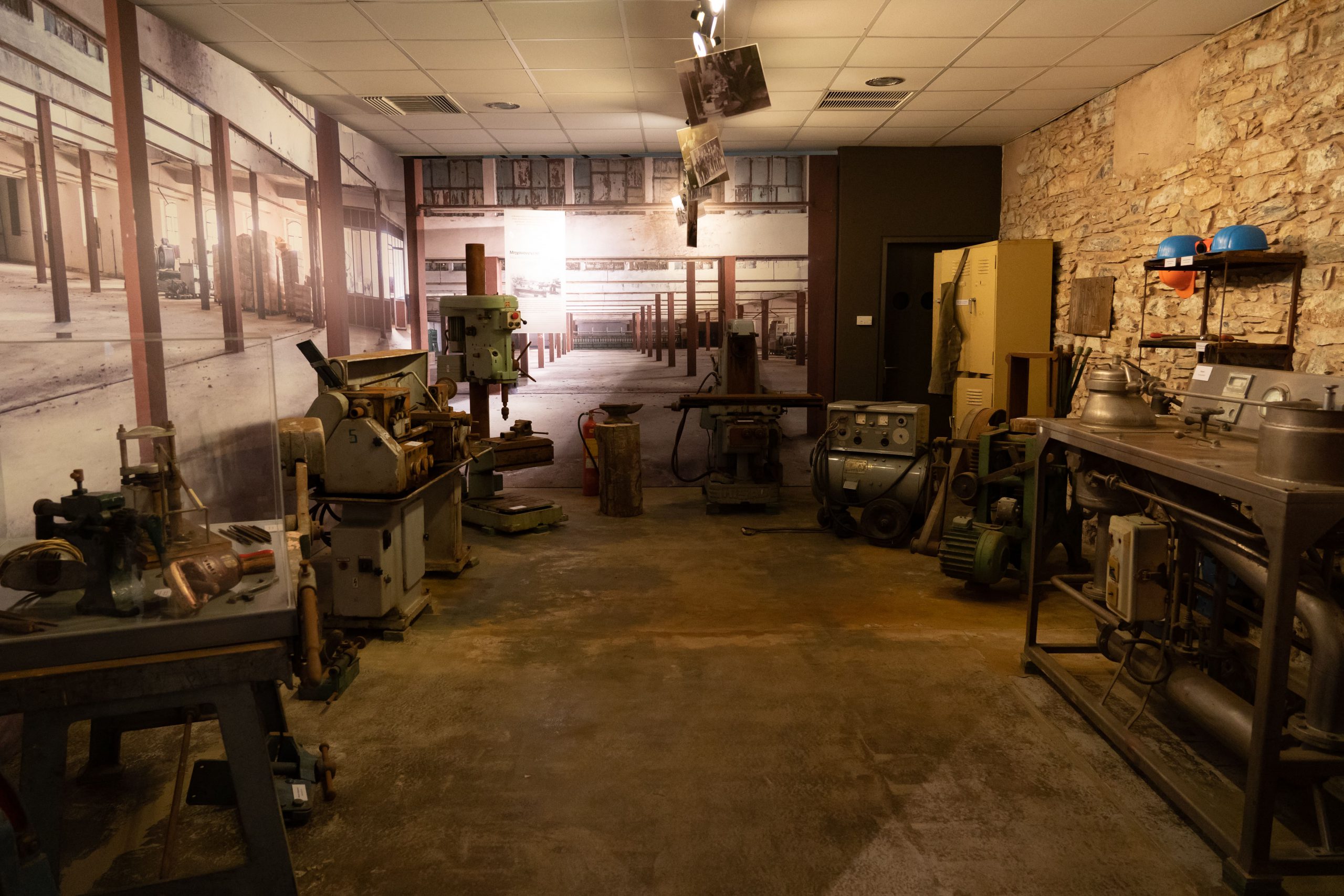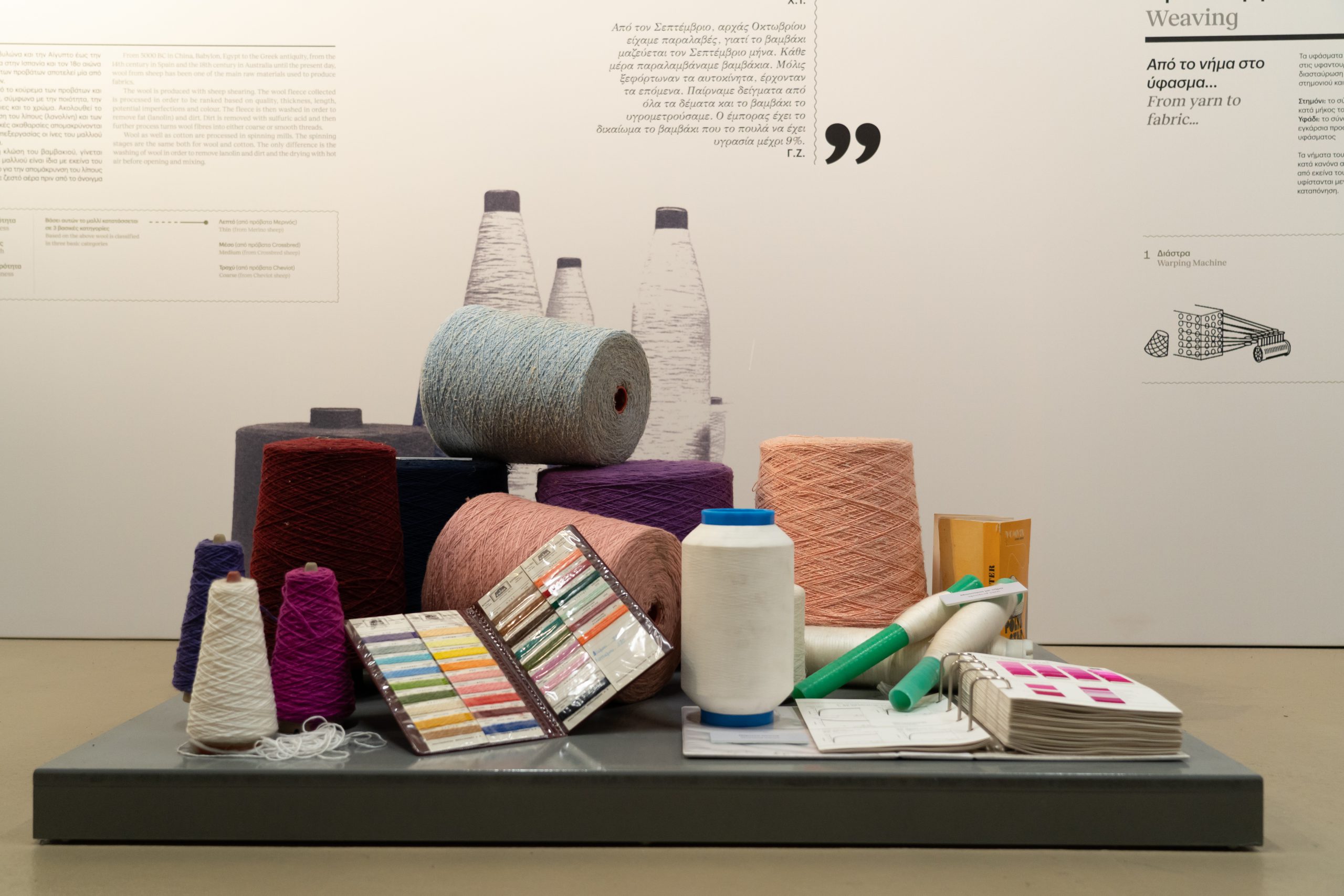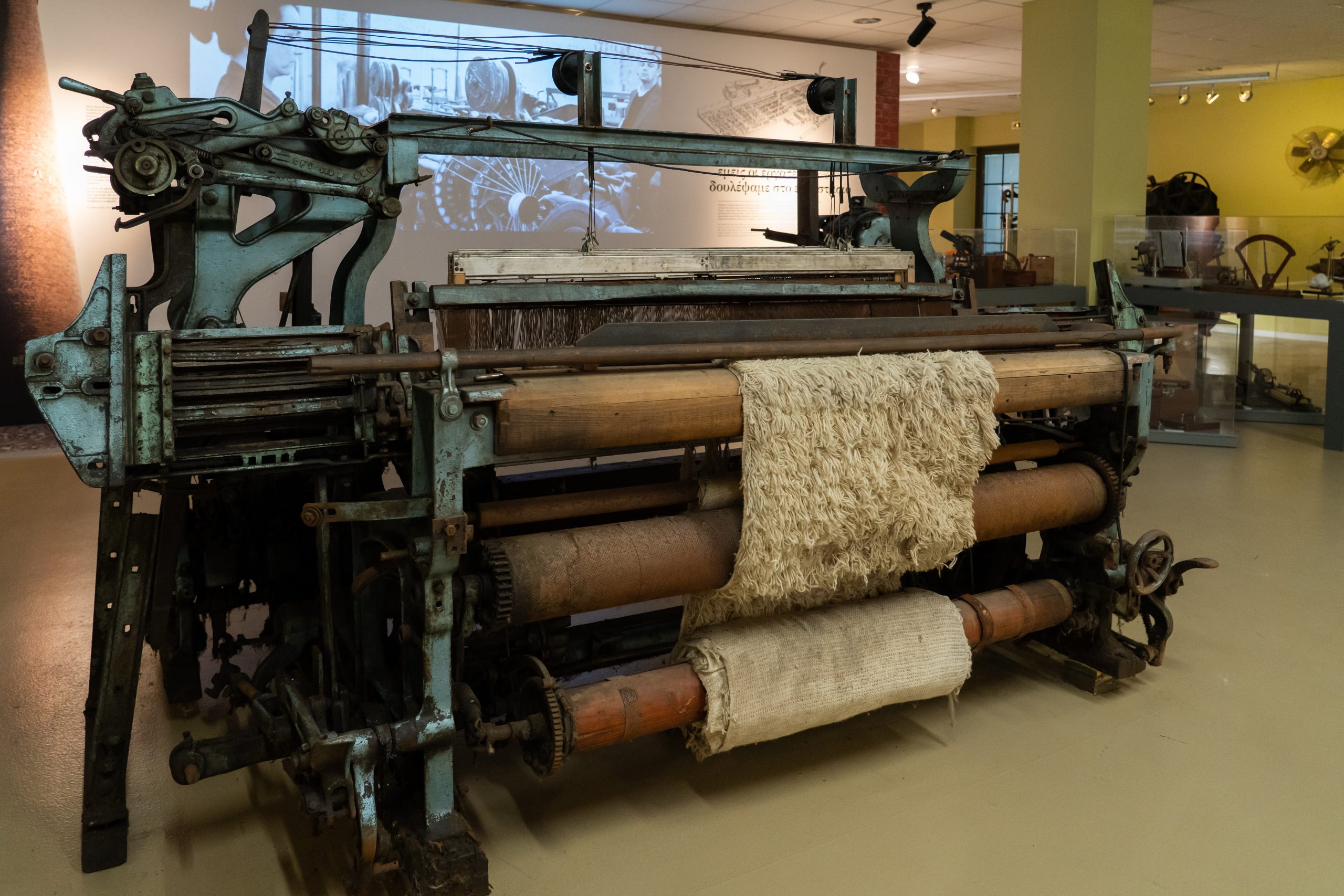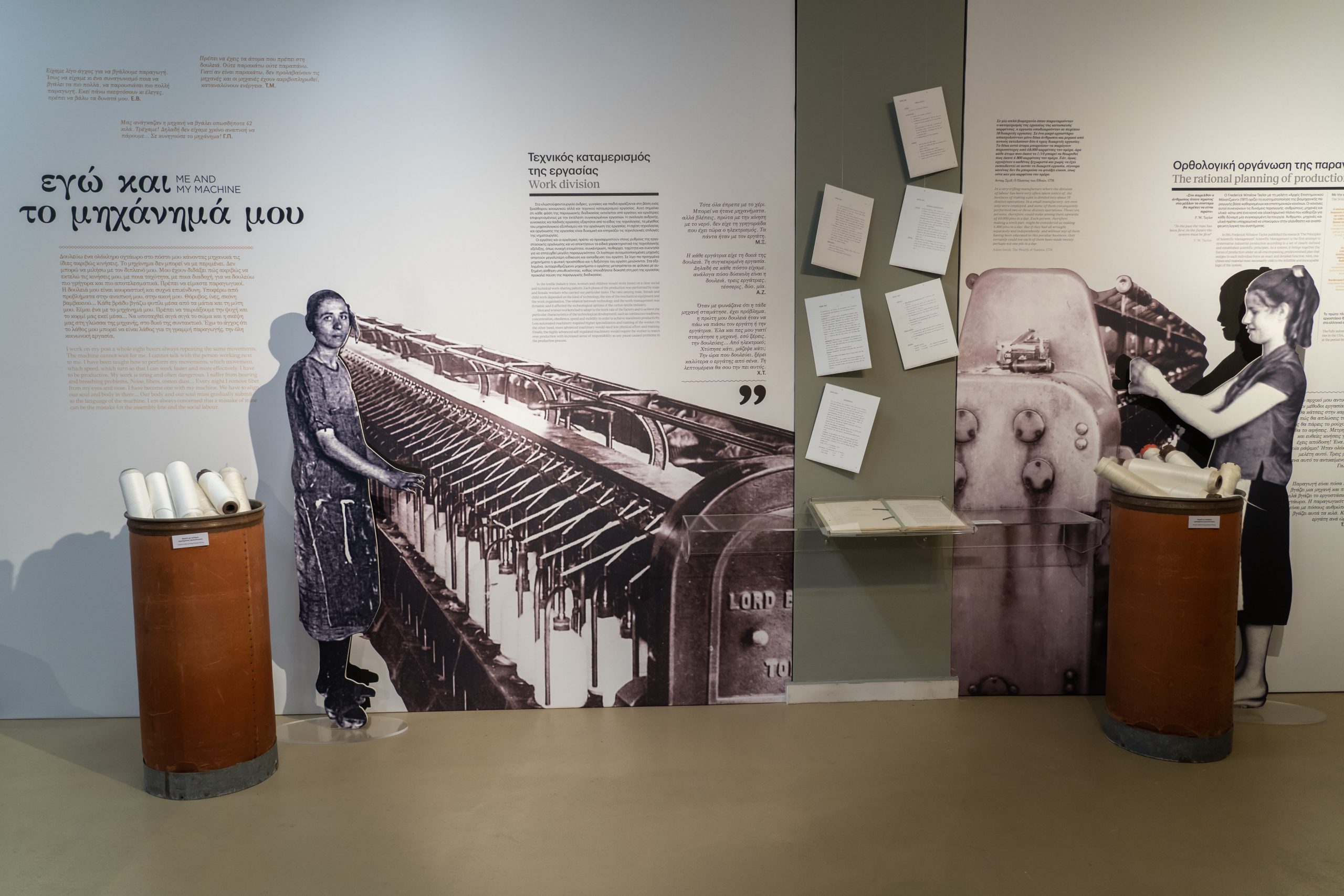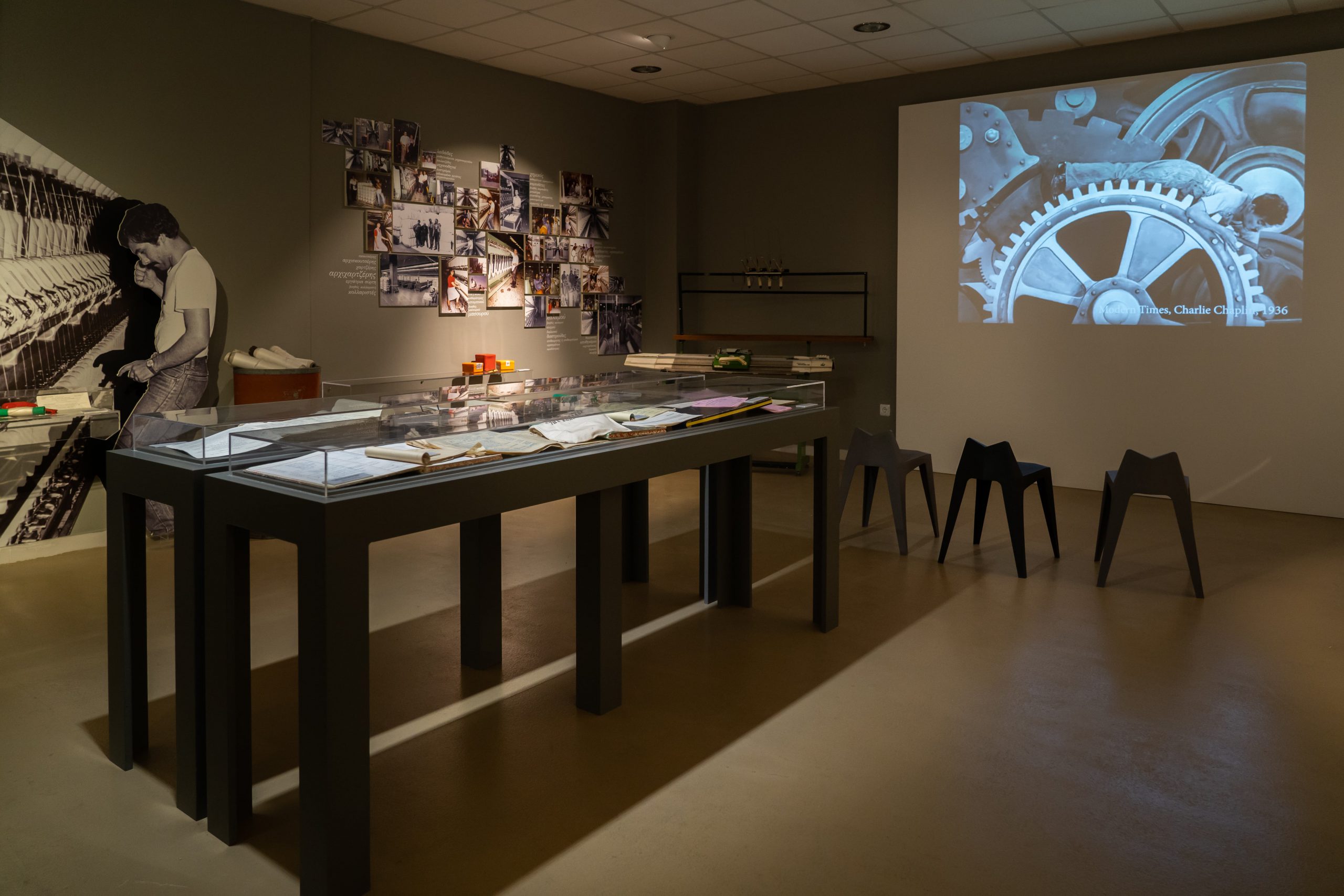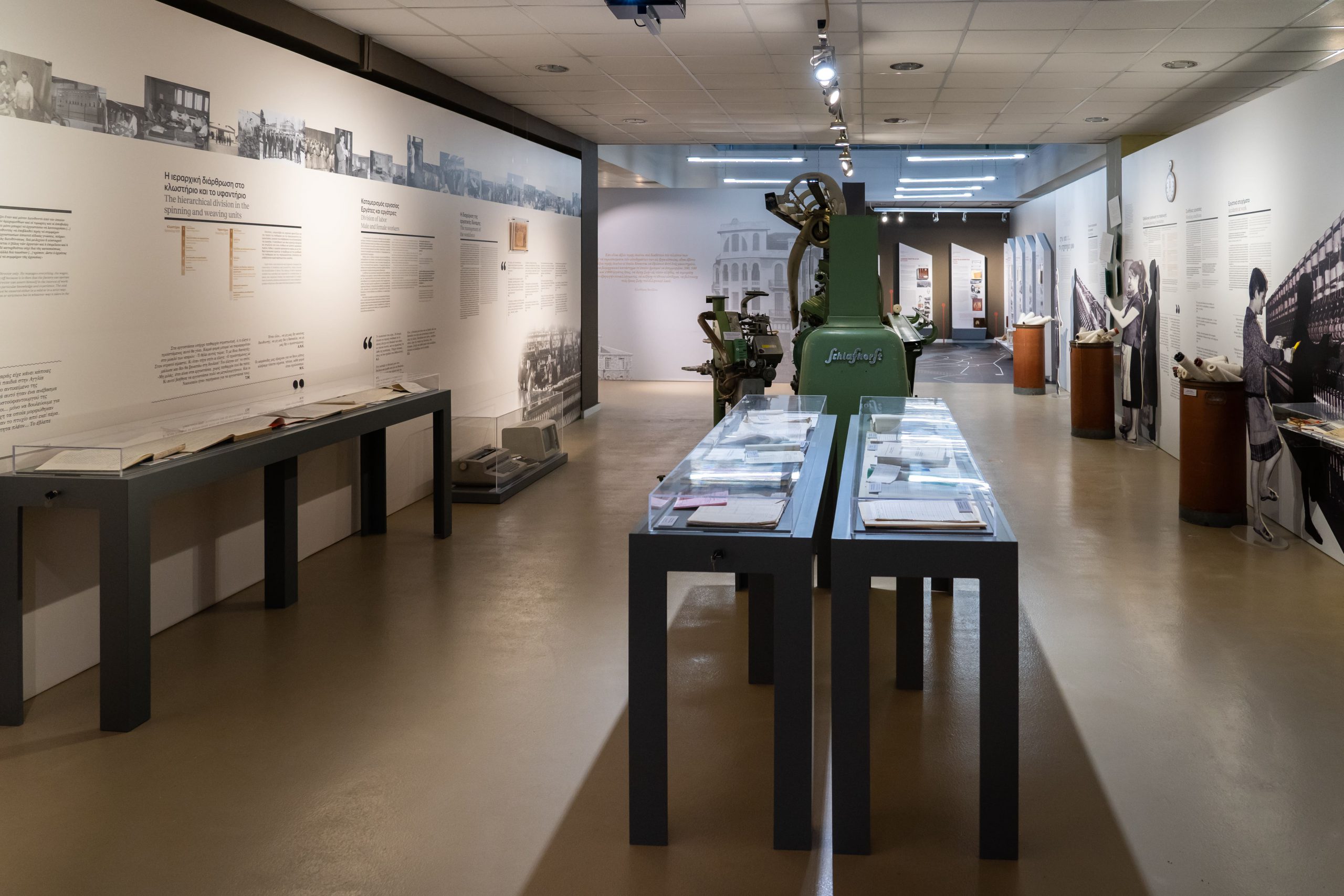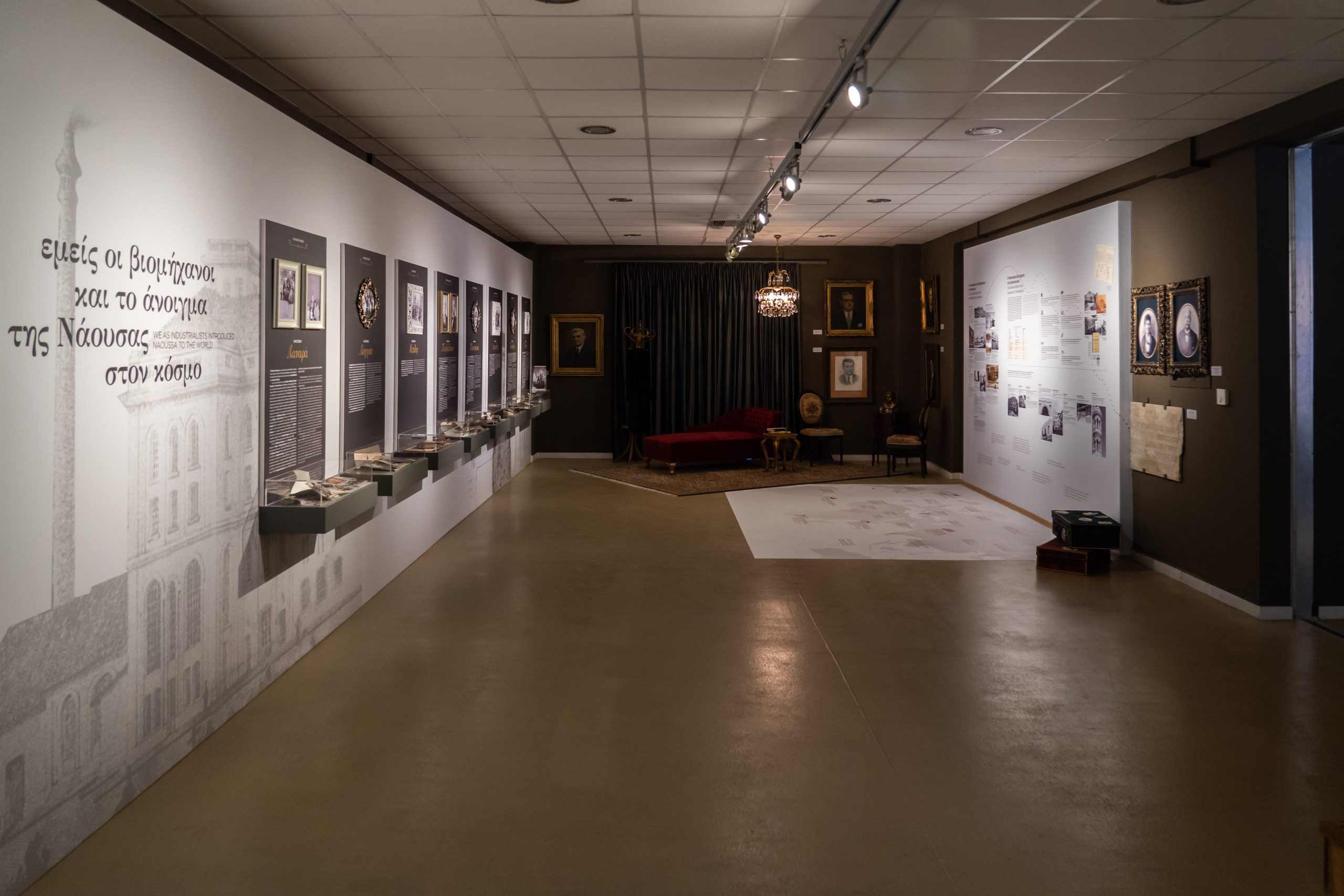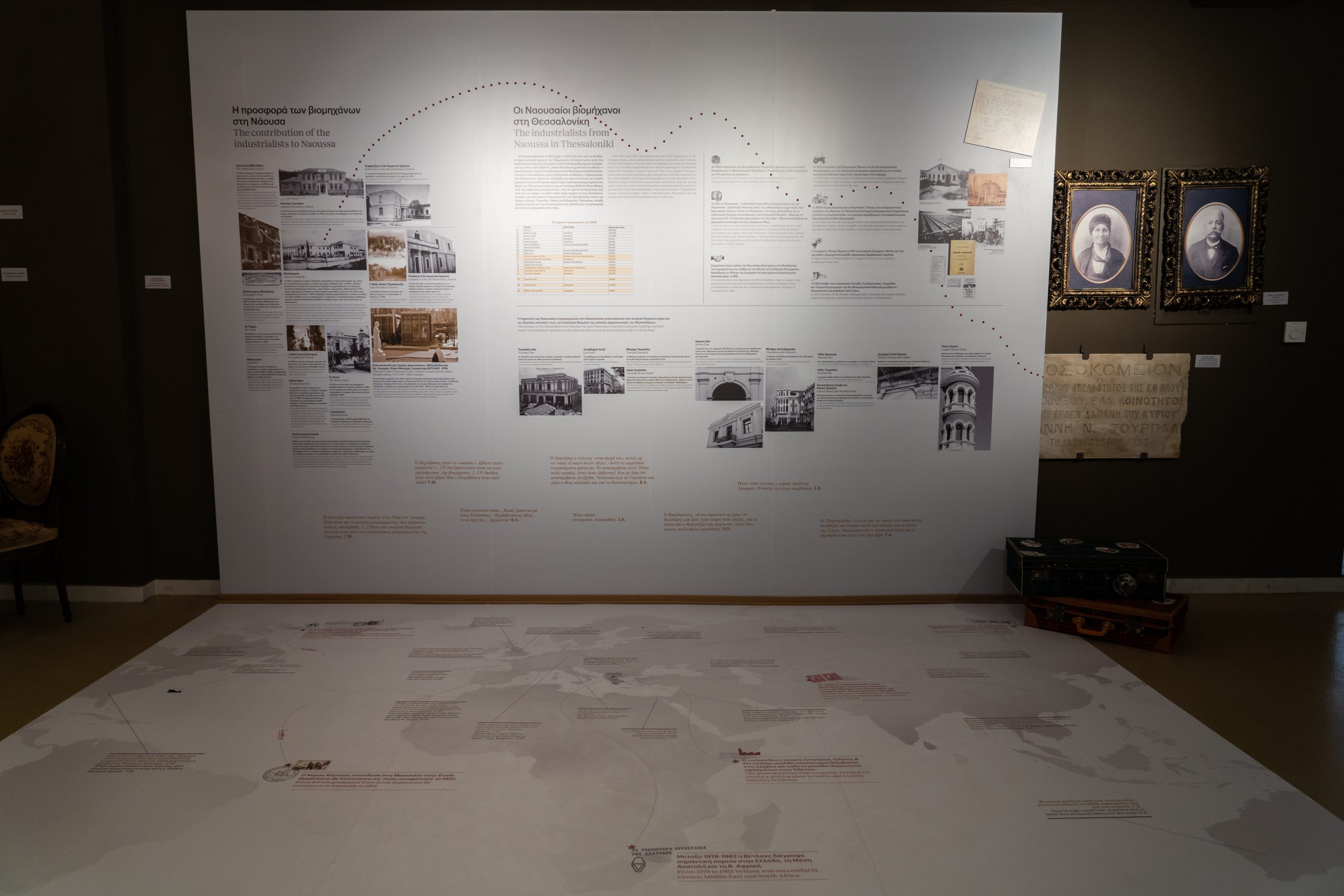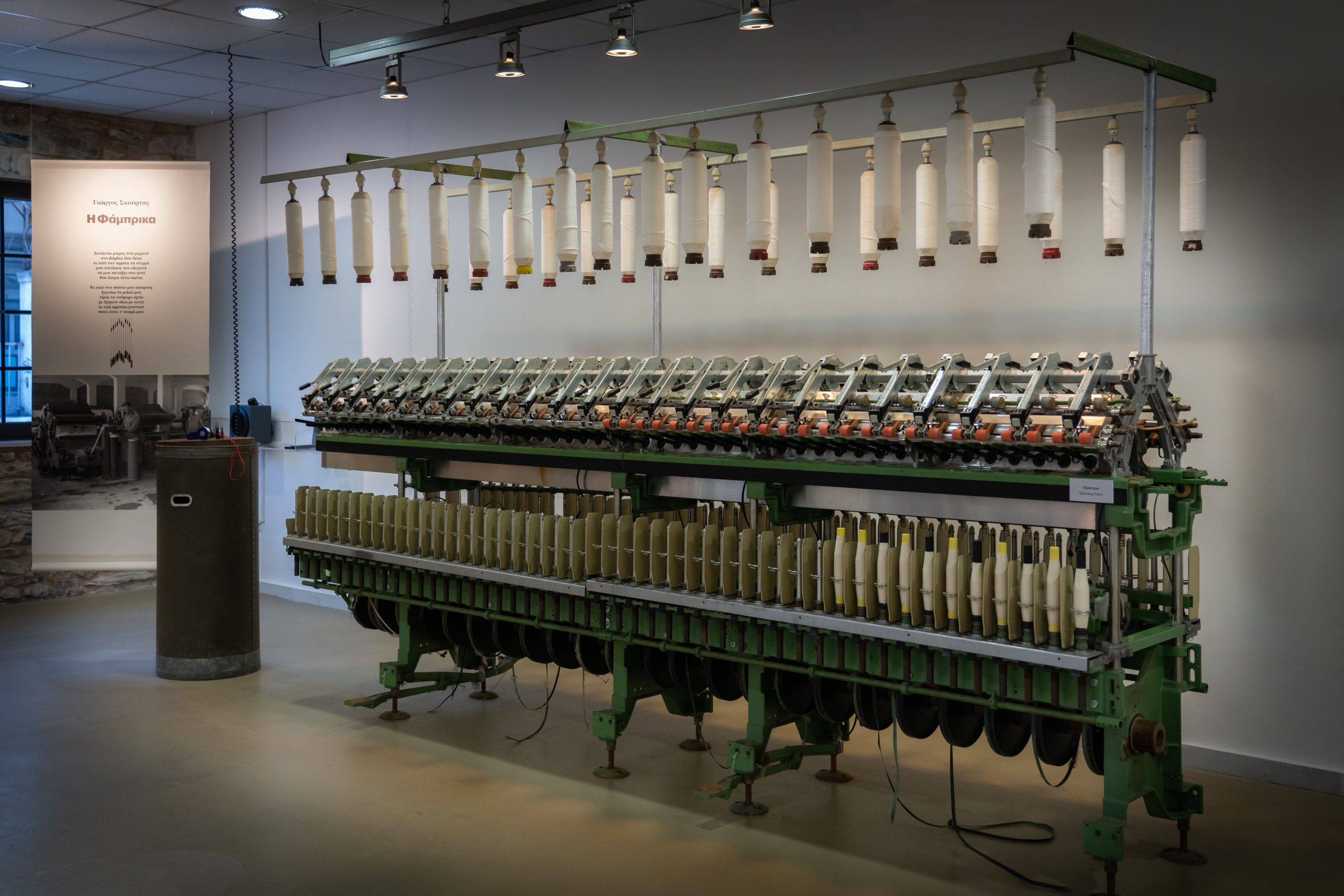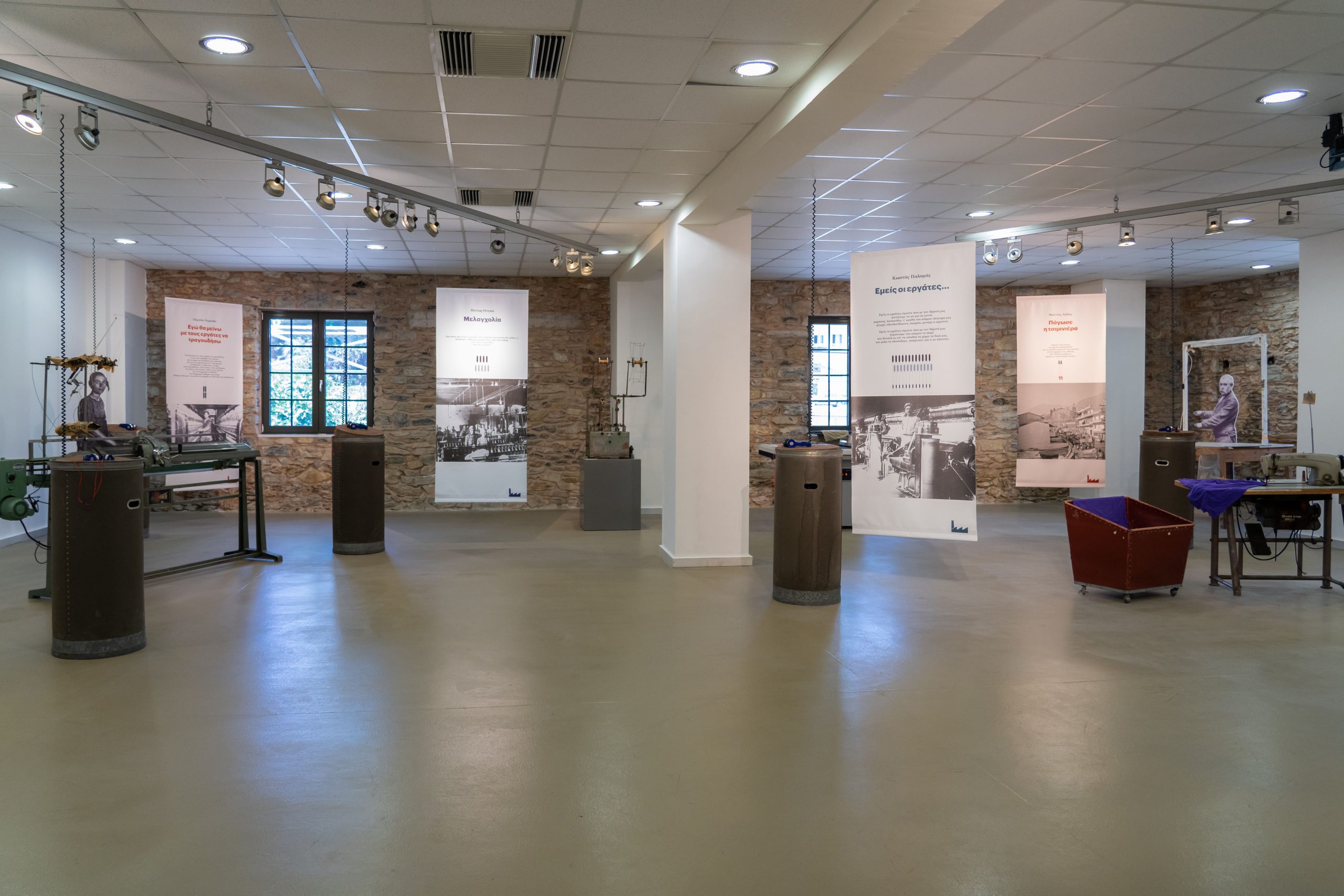In 2009 the reconstruction, the architectural design and the museological programming of the Centre were completed. Its objective was the collection, documentation and exhibit of the tangible and intangible material of the long industrial history of the town and the creation of an exhibition space to function as the town’s landmark and as a live organisation with various educational and cultural events parallel to its exhibitions. In 2012 the project was set in motion with interviews of ex workers, employees, managers and people who contributed with information about the industrial history. The team also started searching for objects so that the collection could be put in place. It was a long process based on research inside the empty factory shells, peoples’ contributions, the present owners of the factories, past industrialists’ descendants, collectors and the citizens of Naoussa. The outcome was a vast collection of machinery, records, tools, final products, personal items, engineer and topographical designs and photographs.
The exhibition “Threads of History – The textile industry in Naoussa” showcases the textile industrial history of the town embedded in the historical, financial and social context, presenting all its monuments, that is: the factories – ex-businesses and the production procedures, the role and operation of machinery and the way manufacturing was organized. It emphasizes water motion, the basic power used in the preindustrial and industrial era and sheds light into people’s stories, workers and industrialists, employees and employers. The exhibition presents several sides of the industrial history of the town until the Second World War and the recent memories of its people. It therefore interconnects the uncovered meanings which either complement or confront each other as new eras have brought changes in society, customs and work conditions. The exhibition is mostly anthropocentric and it attempts to reconstruct the collective memory, as there is not only one memory but many, as many as all of us, as history is made from many small stories.
Abandonment
Immediate referral to the condition that the factories reference are today. Through a linear course, the industrial history of Naoussa unfolds diving from present day into the past. The setting of an abandoned factory introduces the visitor to a picture of factories either in ruins, or as closed and dark shells or with shattered remnants, machinery and records.
We had to work
Human figures, when people left their home place to settle in industrial centres. People who join the reality of the factory, lose their individuality and become workers.
We, the workers and our new world
The visitor encounters the daily working reality. Also, they are introduced to what it means for the person from the agricultural community to be transformed into a worker who is losing control of means of production and becomes an employee. The above-mentioned sections meaningfully form a setting with the man and woman workers taking the lead of the narration.
We worked everywhere
The two basic subsections are the full list of the companies that flourished in Naoussa and the historical reference to the geographical, financial and social factors of the industrial development that turned Naoussa into the Little Manchester of the Ottoman Empire, with the emphasis put on the river which offered the main source of power.
We, the workers worked in the factory
It focuses on the building as a shell and work space, considering it a functional entity, an architectural mega-structure inspiring awe to the workers, incorporating them in its shell. The particular architectural design of the factories in Naoussa and how they evolved in time.
We make fine products from cotton and wool
The visitor discovers the machinery used in the textile industry and its role in the production. The exhibition space looks so much like the factory, comprise the picture of the machinery equipment of the textile industry and its products.
Me and my machine
The worker’s relation with the machine, their relation with their machine and the automation that leads to the relevant connection are prominent. The section focuses on the organisation of the production, the working conditions and accidents.
All of us part of a hierarchy
Industrialists, managers, employees, engineers, supervisors, male and female workers talk about the structure of the industry. They are the people who founded the factories, ran them, kept the accounting books, managed the mail, the payments, supervised production lines, machinery and the workers.
We as industrialists introduced Naoussa to the world
The protagonists are the entrepreneurs who founded the factories in Naoussa and determined its latest financial history. The visitor can see all the leading families with their biographies, the charities they offered in Naoussa, their business expansion in Thessaloniki which changed the financial balance of the city and the world-wide presence of Naoussa with its industrial development.
People’s memories
Oral testimonies of workers and employees, presented in voice extracts. In the room, selected sound extracts can be heard while visitors can walk around scattered machinery.

